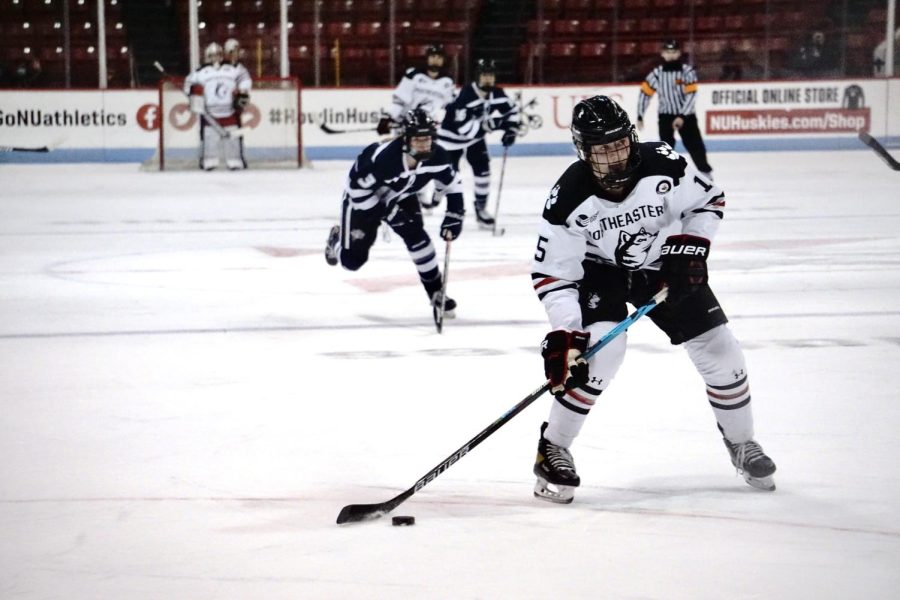NCAA hockey championship changes promote equity through bracket expansion
Northeastern women’s hockey against UCONN
November 19, 2021
On Nov. 10, the NCAA Division I Competition Oversight Committee approved expanding the Women’s National Hockey Championship from eight to 11 teams. The change comes after an Oct. 25 external report highlighted the stark inequities between the Division I men’s and women’s championship tournaments.
The report found that the NCAA spends $4.2 million on the men’s tournament compared to $658,827 on the women’s. In addition, 16 out of the 60 total Division I men’s hockey teams qualify for the yearly tournament. For the women, only eight out of 40 teams qualify.
Following the report, players and coaches from across the NCAA took to social media to express their support for the proposed expansion. Northeastern’s Women’s Ice Hockey Associate Head Coach Nick Carpenito posted on Twitter with a graphic highlighting the championship inequities, with the caption “It’s time. #closethegapNCAA #Timefor12teams2022.”
The announced expansion to 11 teams will make the National Collegiate Women’s Ice Hockey Championship on par with the men’s, allowing an equal 27% of teams to qualify for the tournament.
The push for expansion is not new, said head Northeastern women’s hockey coach, Dave Flint.
“We’ve been pushing for it for a while,” Flint said. “It’s nice to see that we are finally making some ground.”
There are many questions that still remain to be answered by the NCAA, and it is still unclear when the 11 team expansion will take place. The changes can be implemented as early as this year’s tournament or in 2023. The NCAA Division I oversight committee is set to meet in the coming weeks to discuss the final details of the tournament and send its recommendations to the Division I council for final approval.
As a fifth year with a plethora of experience in the championship tournament, goaltender Aerin Frankel thinks the tournament expansion is a step in the right direction for the future of the tournament.
“There’s a lot of teams that don’t make the tournament that are deserving of it,” Frankel said. “We saw that last year with the University of Minnesota: They are usually a top three team, and they didn’t make the tournament last year and, with that expansion, hopefully that won’t happen.”
The expansion sparked conversation on social media about the disparities between men’s and women’s sports across the NCAA and called on the association to invest in their women’s programs. Former professional tennis player Billie Jean King vocalized her support on social media, calling out the discrepancies between the NCAA’s funding for male and female athletes.
Some say that the attendance disparities at Northeastern hockey games reveal a larger issue about the perception of women’s sports. For defenseman and graduate student Brooke Hobson, however, there are no stark discrepancies between the way the two teams are treated.
“I think Northeastern does a really good job making us equitable to the men’s team,” Hobson said. “Hopefully [Northeastern] opens eyes for other schools that have discrepancies between the men and women.”
For all who are skeptical about women’s hockey, Flint urges them to attend a game at Matthews Arena.
“For those people that are skeptics, they should come out and watch a game and see how exciting we are to watch,” Flint said. “[Attendance] plays a big role in our team’s performance, and we need fan support down the stretch to help give us that momentum going into the tournament going into the tournament.”
Last season, Hobson, Flint and the Huskies ended their historic 2020-21 season in a tragic 2-1 loss against the Wisconsin Badgers in the National Championship. It was Northeastern’s first Frozen Four and National Championship appearance.
In the end, the tournament expansion does not impact the Huskies’ final goal.
“We came so close last year,” Flint said. “This year, we want a national championship.”







